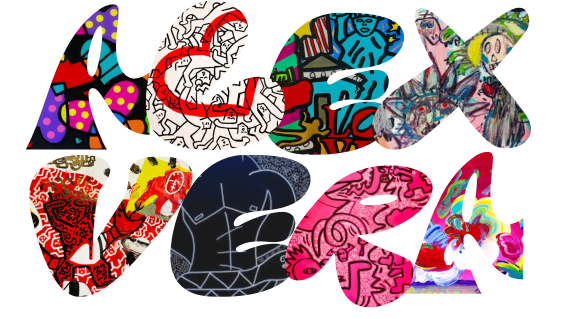| Keith Haring’s art was shown in more than a hundred group and solo shows throughout his life, and he continues to be celebrated today as an important painter, with works displayed in exhibitions and museums worldwide. He became a fixture at the 57 Club, where he organized shows, made friends and creative connections with such artists as Kenny Scharf and Jean-Michel Basquiat, and experienced his self identity within an environment that celebrated gay culture instead of decrying it. This American painter, who is now considered one of the great Masters of the art world, made friends with other emerging artists, who shared his interest in the colorful, transgressive graffiti art on the city’s streets. Here, Keith Haring became friends with fellow artists like Andy Warhol, George Condo, and musicians, like Madonna, and performance artists, and graffiti writers that made up a budding artistic community.
Keith Haring’s exposure to an alternative artist community, and his friendships with Jean-Michel Basquiat and Kenny Scharf, among others, encouraged Haring to express himself through graffiti and street art. Specifically by using the subways of New York City to make his artwork viral. The use of New York’s subway system as Keith Haring’s own art gallery occurred almost immediately to him, upon his move to New York city and experiencing all the graffiti that surrounded him when riding the rails. Keith Haring, the artist, like a few other 1980s graffiti artists, found a blank canvas in the advertising boards scattered throughout the public transportation system of New York, where he expressed his socially conscious, often humorous messages in stations and on the insides of train cars. Keith Haring relied on methods and locations from street-based art such as murals and graffiti, used bright, unnatural colors, and made images accessible, to catch viewers eyes and minds, and make them have fun while at the same time engaging with serious issues. He frequently contoured his characters and scenes using thick black lines, which recalls many artists from early modern times such as Picasso, and also from the Pop Art movement (Warhol), in addition to Haring’s contemporaries, 1980s graffiti artists from New York.
Keith Haring’s art was heavily inspired by trends and social-political issues at the time, especially as they were being experienced in New York City, where Keith Haring lived–from the rhythms and tempos of hip-hop music, which was growing in popularity at the time, to themes like AIDS, drug abuse, sexuality, religion, war, the threat of nuclear weapons. In addition to being impressed with the innovation and energy of his contemporaries, Haring was inspired by the works of Jean Dubuffet, Pierre Alechinsky, William Burroughs, Brion Gysin, and Robert Henris Manifesto on the Arts, which affirmed the essential independence of the artist. Keith Allen Haring’s subsequent works frequently communicated political and social themes–anti-crack, anti-apartheid, safer sex, homosexuality, and AIDS–through their own iconography. Believing in the notion that art is for everyone to enjoy and representing a medium for communicating political messages to a diverse audience, Keith Haring pioneered the use of public spaces for artistic purposes, and his works of public art are still visible along the streets of many cities worldwide. | |



